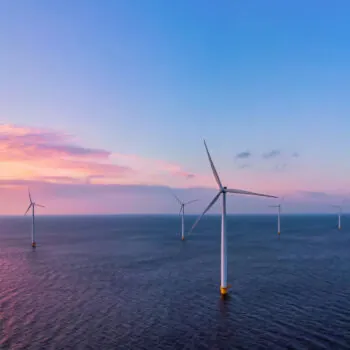As Europe moves to implement the Paris Climate Agreement, two-thirds of its low carbon energy infrastructure investment to 2040 will need to be in energy efficiency. This implies an eightfold increase in current levels of investment.
The Energy Union Strategy has called for a fundamental rethinking of energy efficiency, to treat it as an energy source in its own right, representing the value of energy saved. Without a major rethink Europe risks it ability to meet its climate and energy targets in 2030 and beyond.
This briefing [PDF, 1.4MB] argues that the investment gap exists because, politically, we have failed to properly grasp the nature of the challenge. Going forward, energy efficiency needs to be redefined as a core part of Europe’s energy infrastructure. This briefing outlines the arguments for this and the practical implications of moving forward with this proposal.
Delivering Energy Efficiency
An eightfold increase in current levels of energy efficiency investment is needed to 2040 to keep Europe on track to meet its Paris Agreement obligations.
The European Commission’s Heating and Cooling Strategy has started to set out the links between energy efficiency and the wider energy infrastructure system. But there needs to be more explicit integration. The first step is to define energy efficiency as an infrastructure priority. There are three core arguments for this:
- Functional: in a post-Paris Agreement world, around two-thirds of the investment needed to achieve 2°C in a cost-effective manner needs to be in efficiency, meaning energy efficiency investment is the most critical part of the energy transition.
- Logical: Treating energy efficiency as infrastructure and integrating it into wider national infrastructure planning means supply side investment needs will fall as projected demand falls, thus reducing the risk of asset stranding and reducing costs to society.
- Definitional: Energy efficiency fulfills the definition of infrastructure used by the International Monetary Fund and other economic institutions. Like traditionally recognized infrastructure, energy efficiency is long-lasting capital stock, provides inputs to a wide range of goods and services and frees up capacity elsewhere in the economy.
Transformative Approach
Treating energy efficiency as infrastructure would transform how the Commission and Member States approach the energy efficiency agenda in four ways.
- Energy efficiency projects would be subject to economic appraisals that highlight its benefits as well as costs: Treating energy efficiency as infrastructure would require it to be appraised in the same way as other social investments (such as road or school building programmes). Doing this will make visible the multiple benefits of energy efficiency – and the fact that a failure to deliver energy savings and demand response actually has a cost to society.
- There would be a strong case to review EUROSTAT accounting rules, allowing for adjustments in how energy efficiency investment is accounted: Two review options could be considered: (i) Consider a new off balance sheet classification of ‘productive debt’ (applies to Government-led investment programmes); (ii) Consider an amendment to how IFRS rules are interpreted and recognise cash savings from energy efficiency investment programmes and Energy Performance Contracts in the ‘scoring’ of investments (applies to government led investment, as an alternative to the above, and also to industry-led investment).
- There would be opportunities to create a better functioning internal energy market: To ensure the delivery of the best outcomes for consumers, energy markets need to be able to deploy the optimal amount of energy efficiency over time. This requires bespoke regulation of energy markets to drive the deployment of demand response and energy efficiency that create a “level playing field” where efficiency can compete equally with the supply side in energy markets (both the wholesale market but also in capacity markets and even auctions for low carbon capacity).
- A review of State Aid Treatment of energy efficiency would be triggered to facilitate streamling of public-private financing options: The constraints placed on aid intensities for energy efficiency (30-50%) measures are the lowest of all environmental aid measures; energy infrastructure on the other hand is allowed 100% of eligible costs. Revising State Aid treatment of energy efficiency to match the treatment of wider energy infrastructure will streamline the processes by which public-private financing structures are developed to support investment, which in turn will unleash the power of cities and regions to deliver efficiency and demand side measures.


